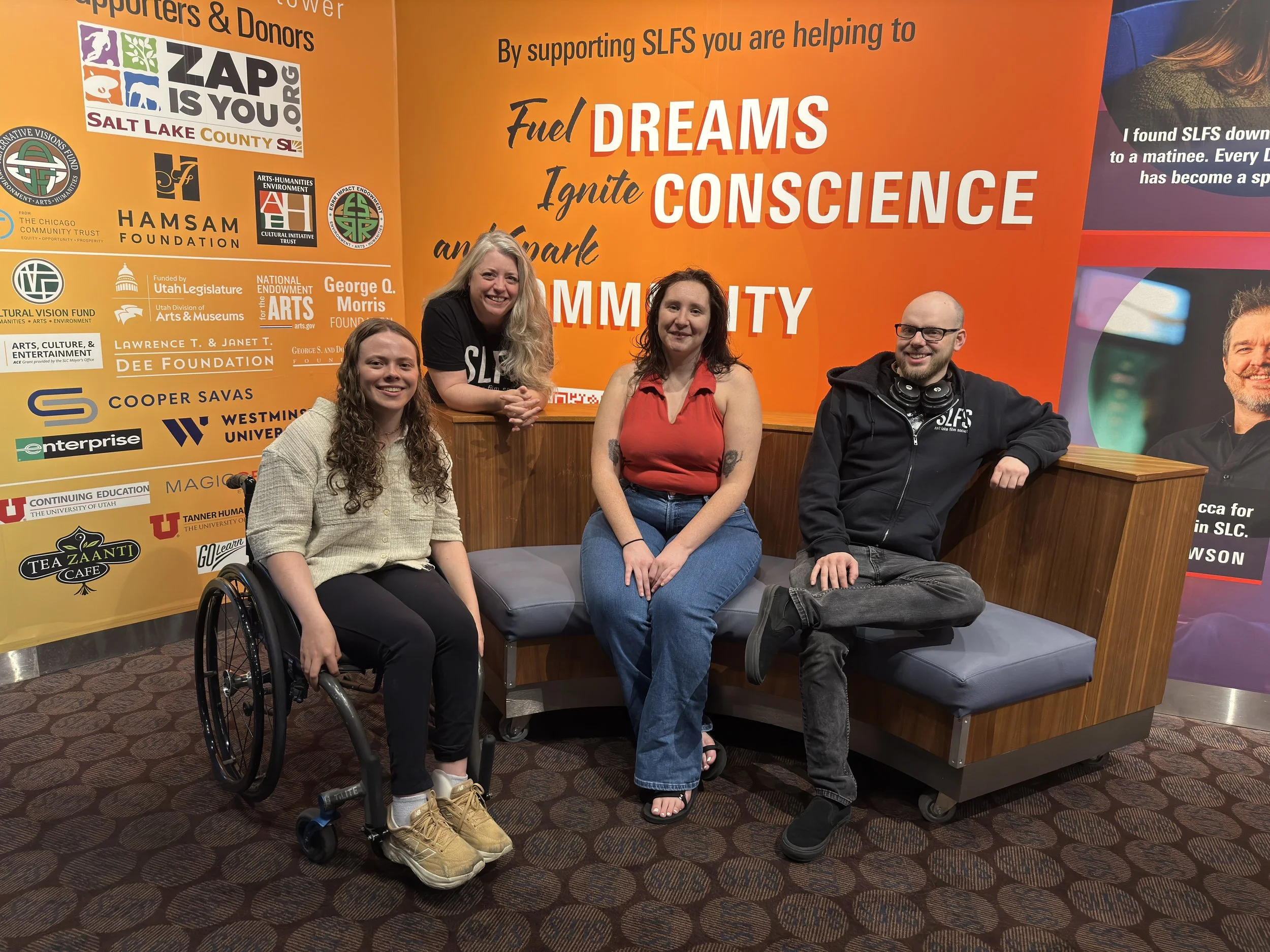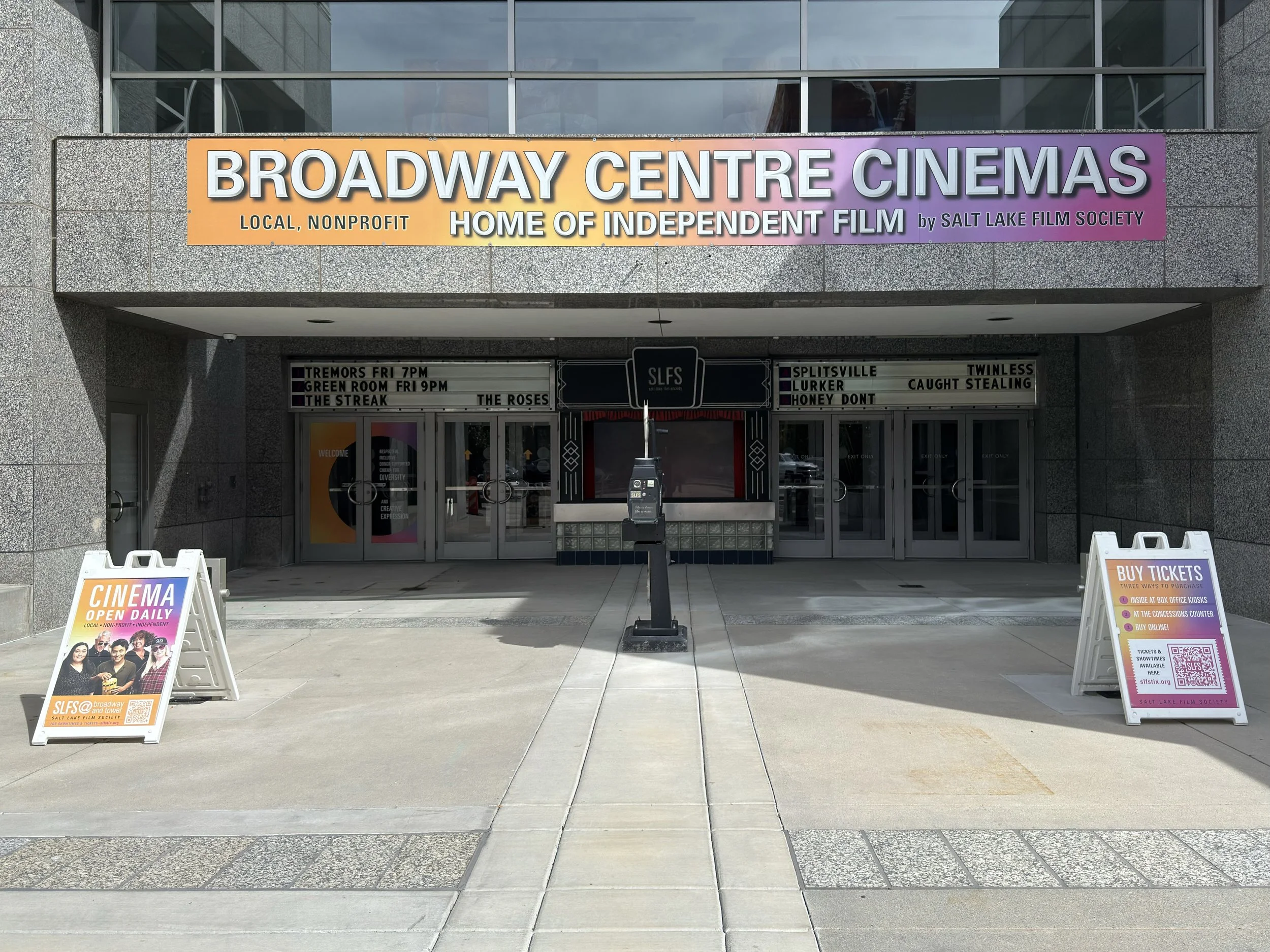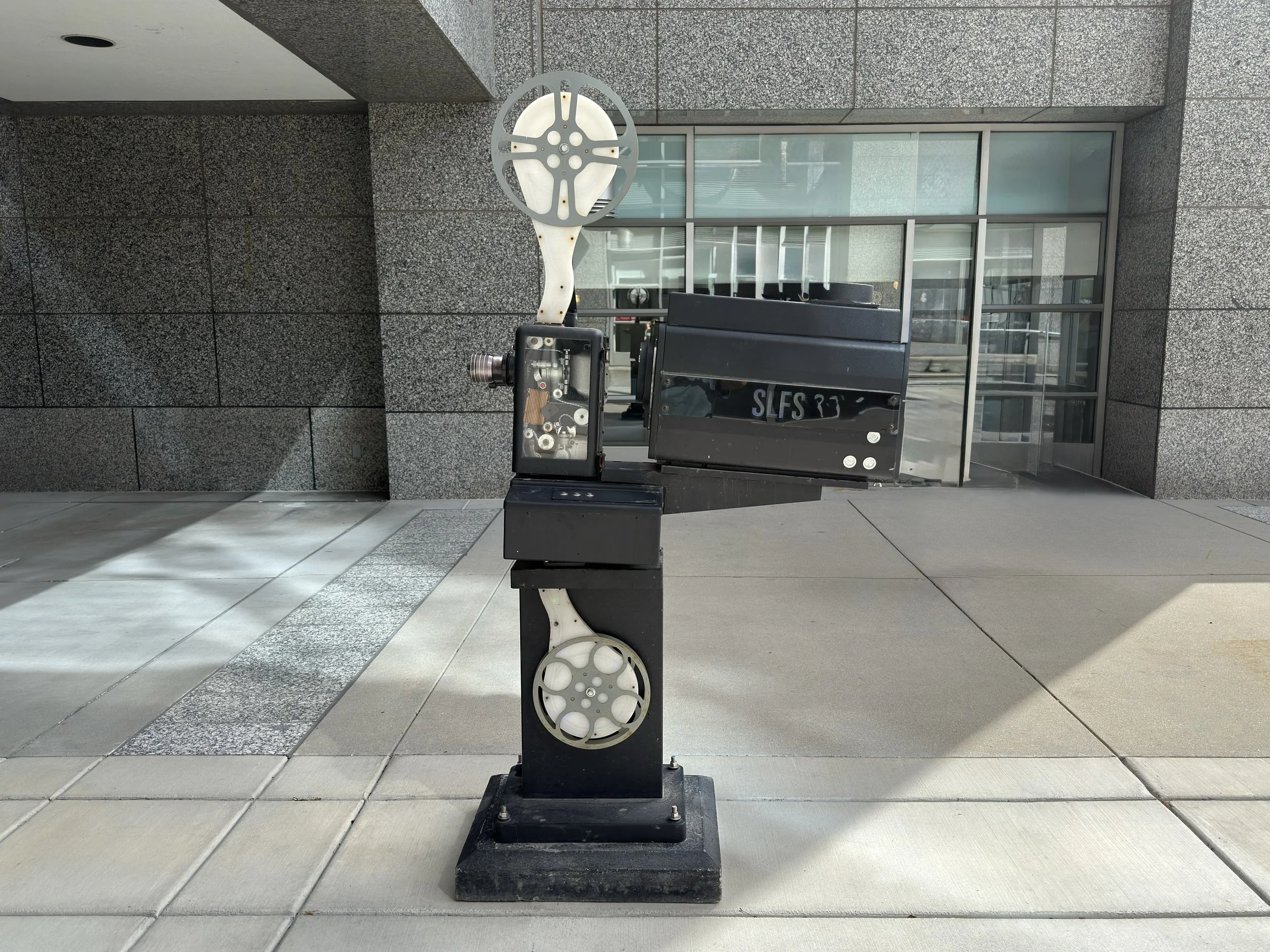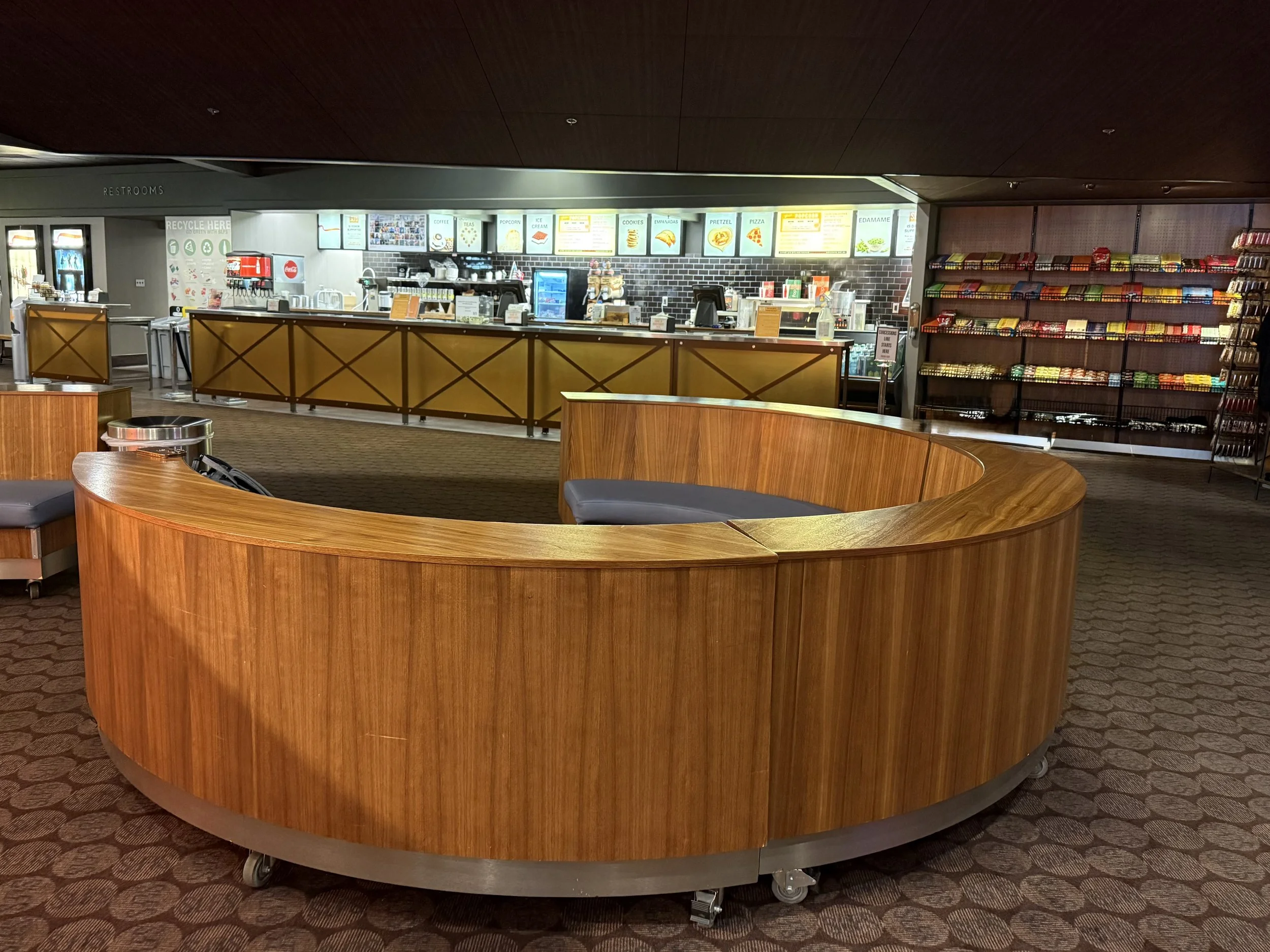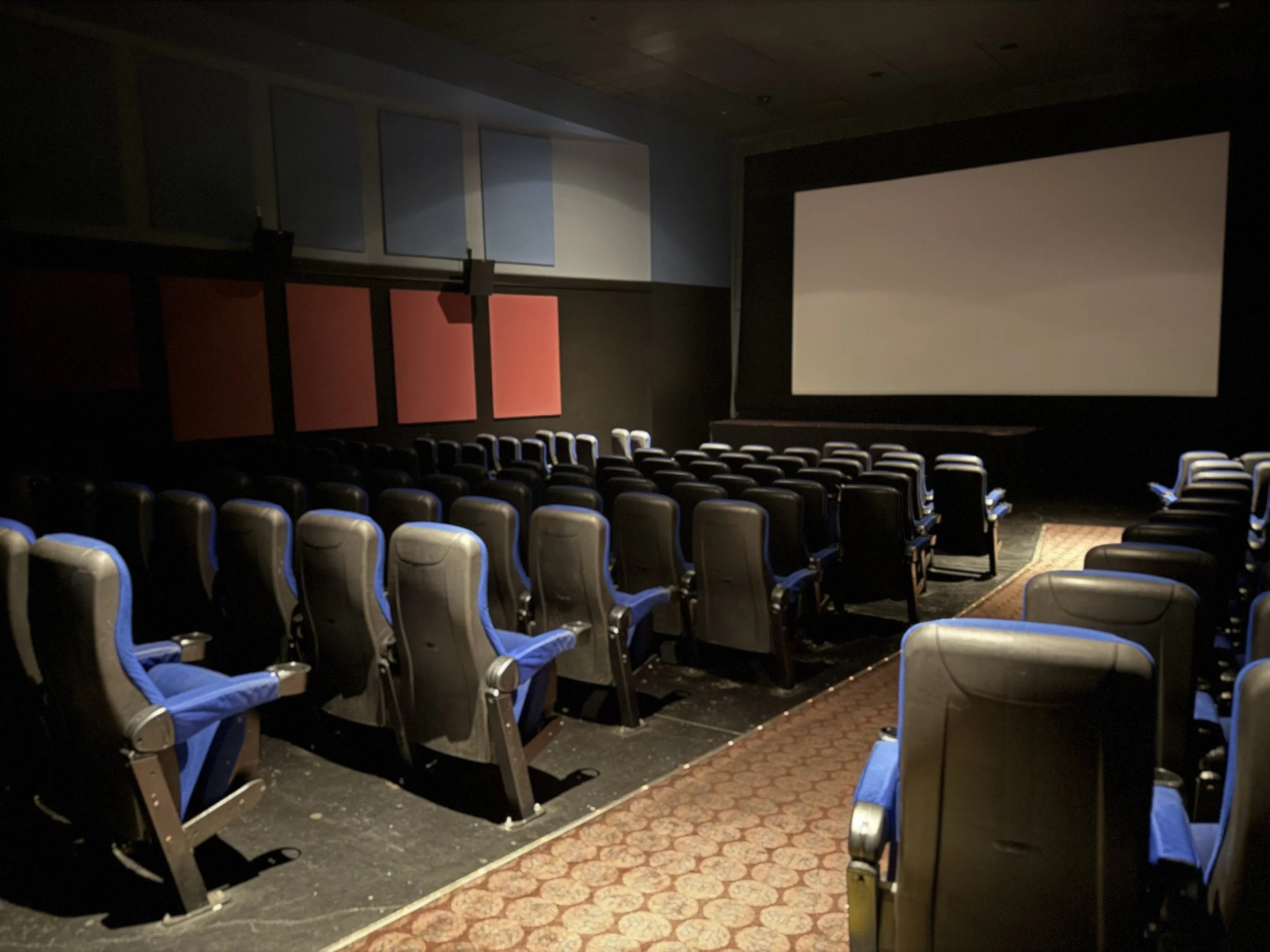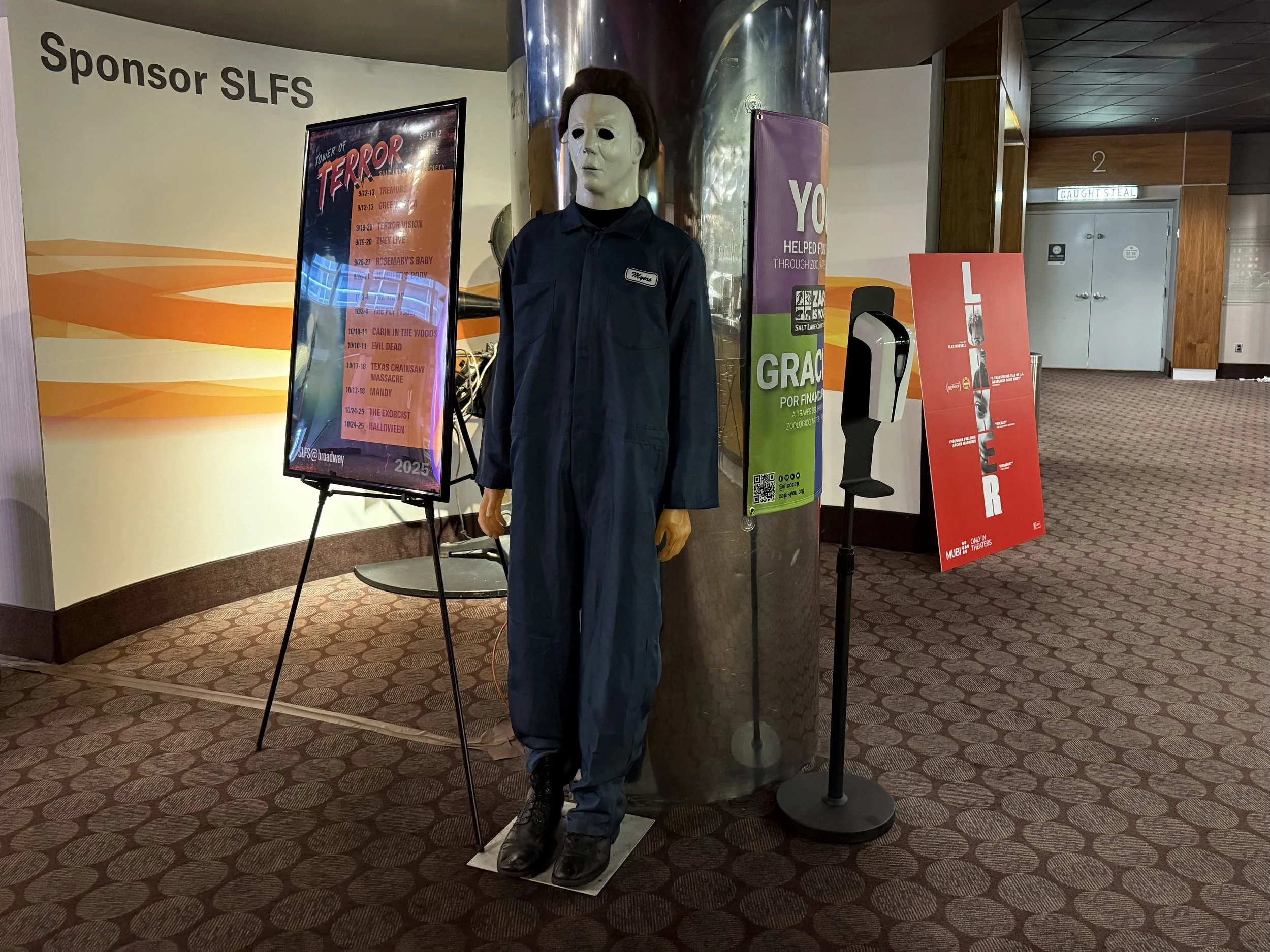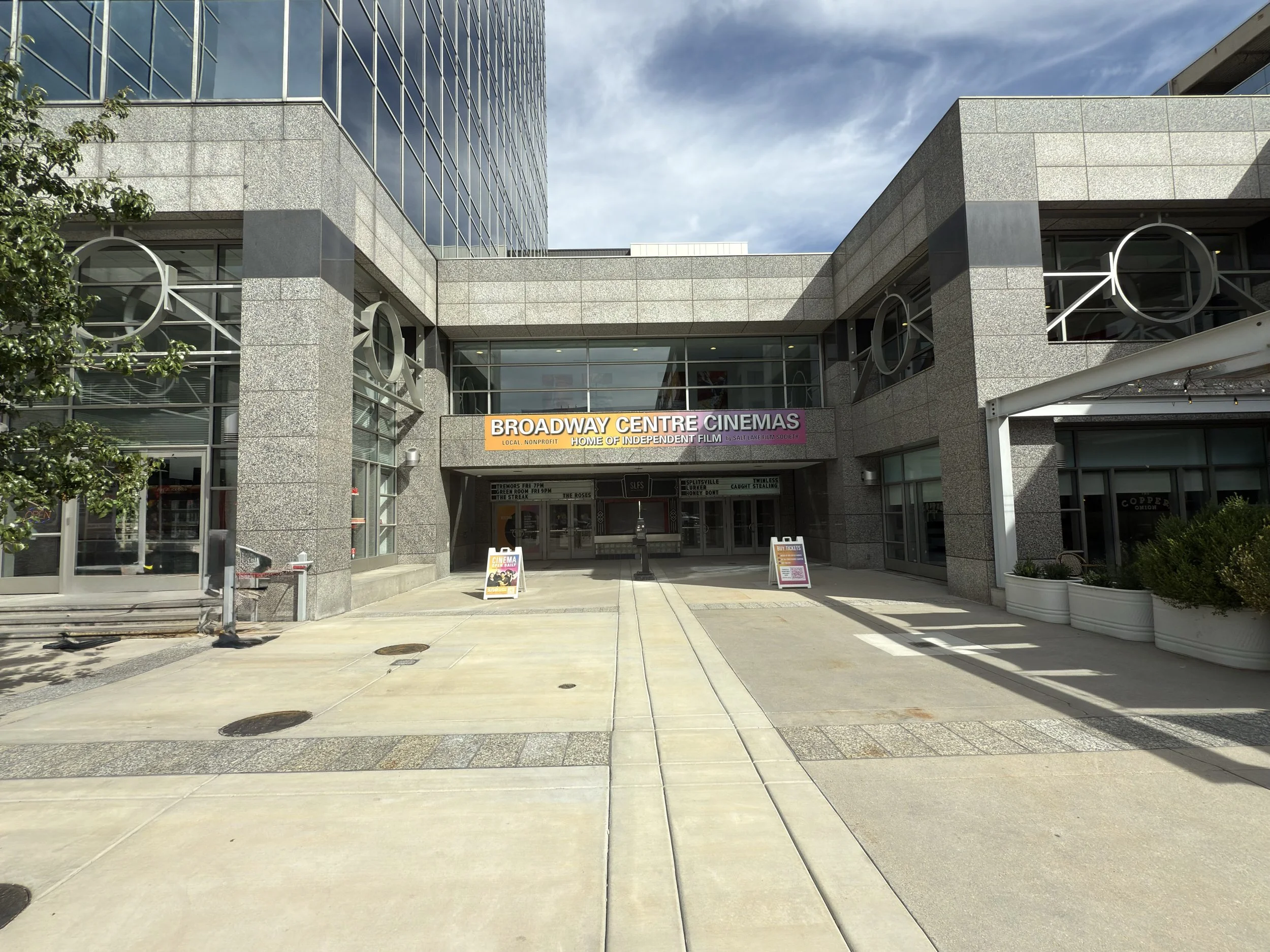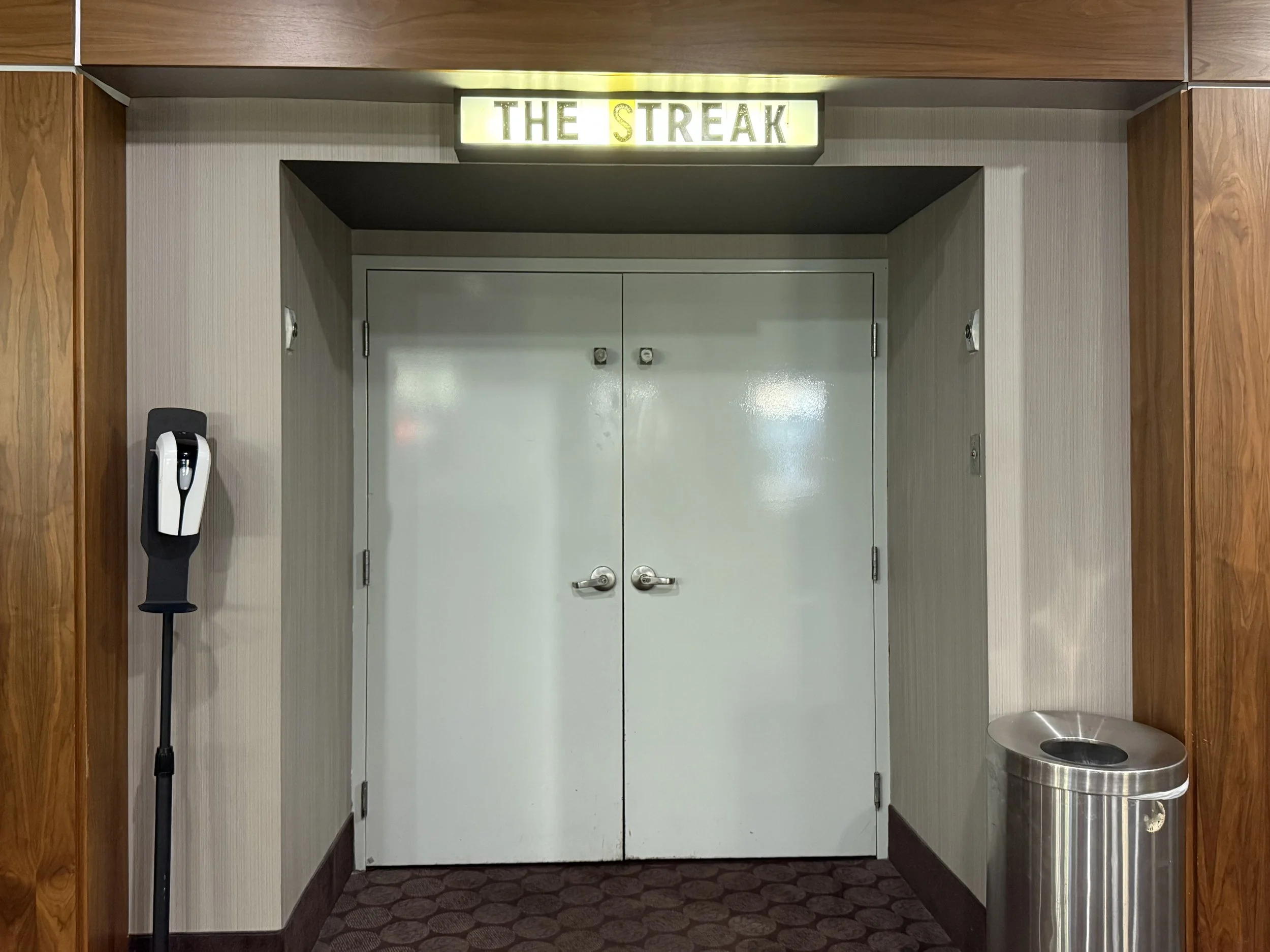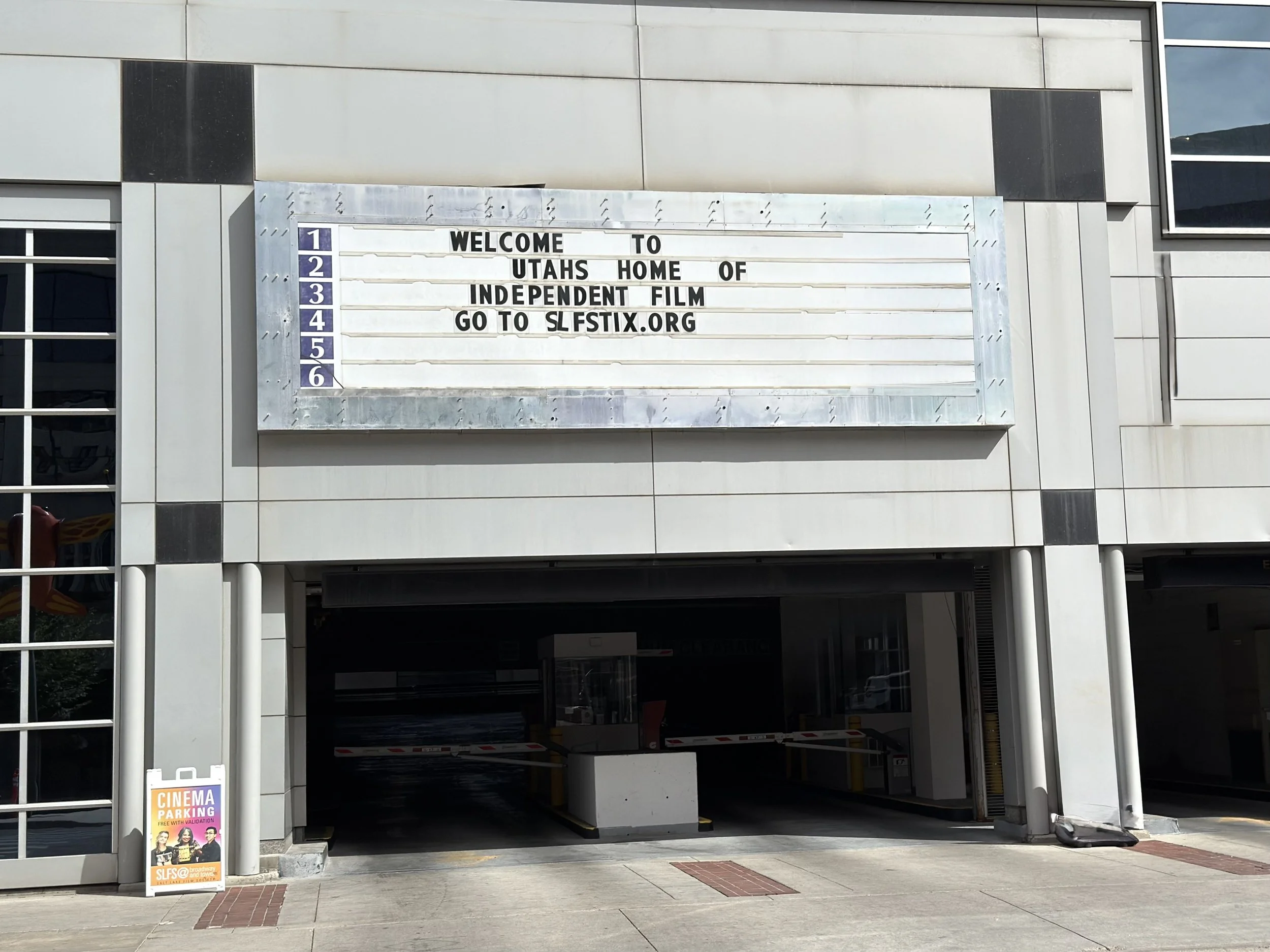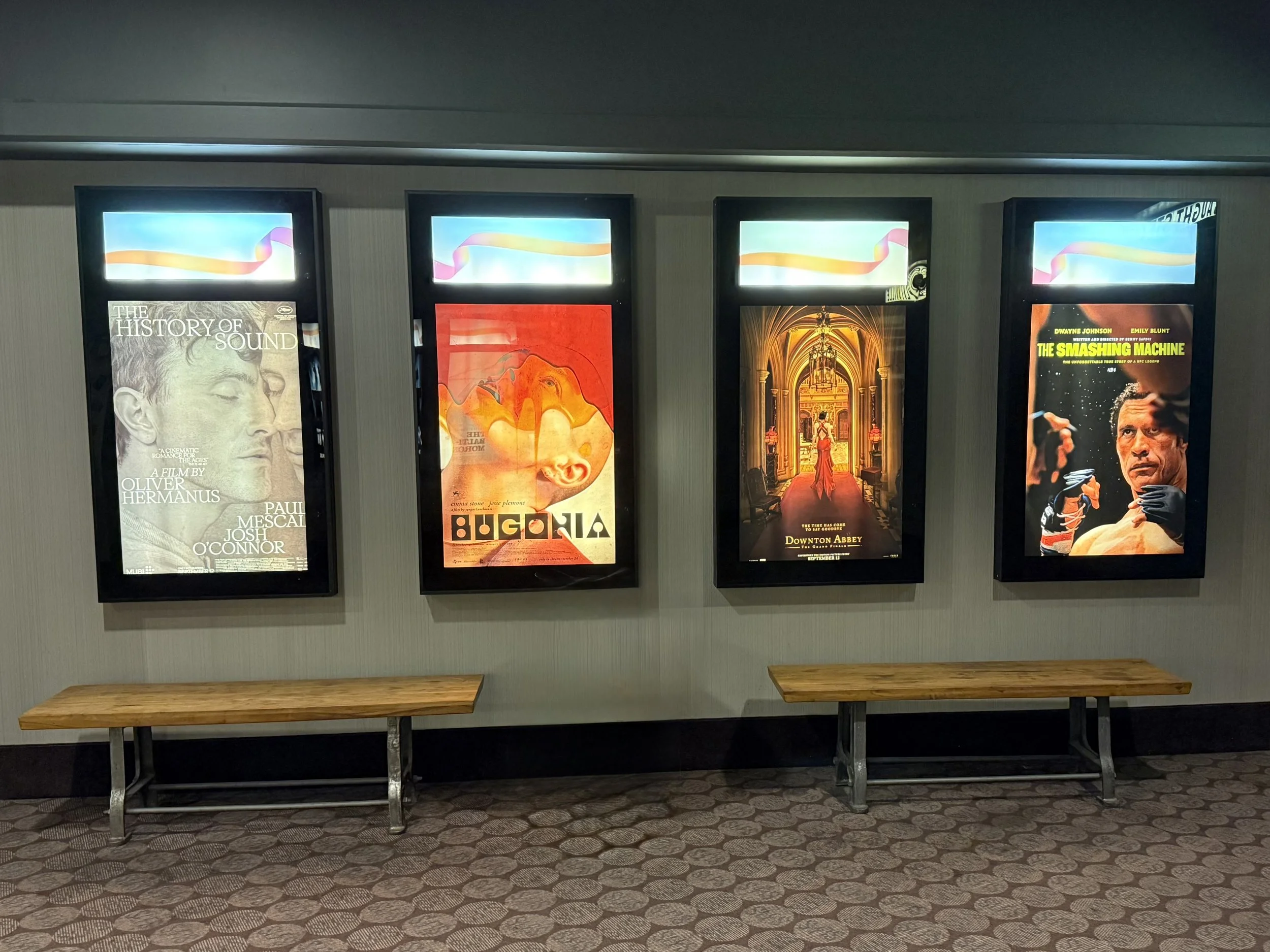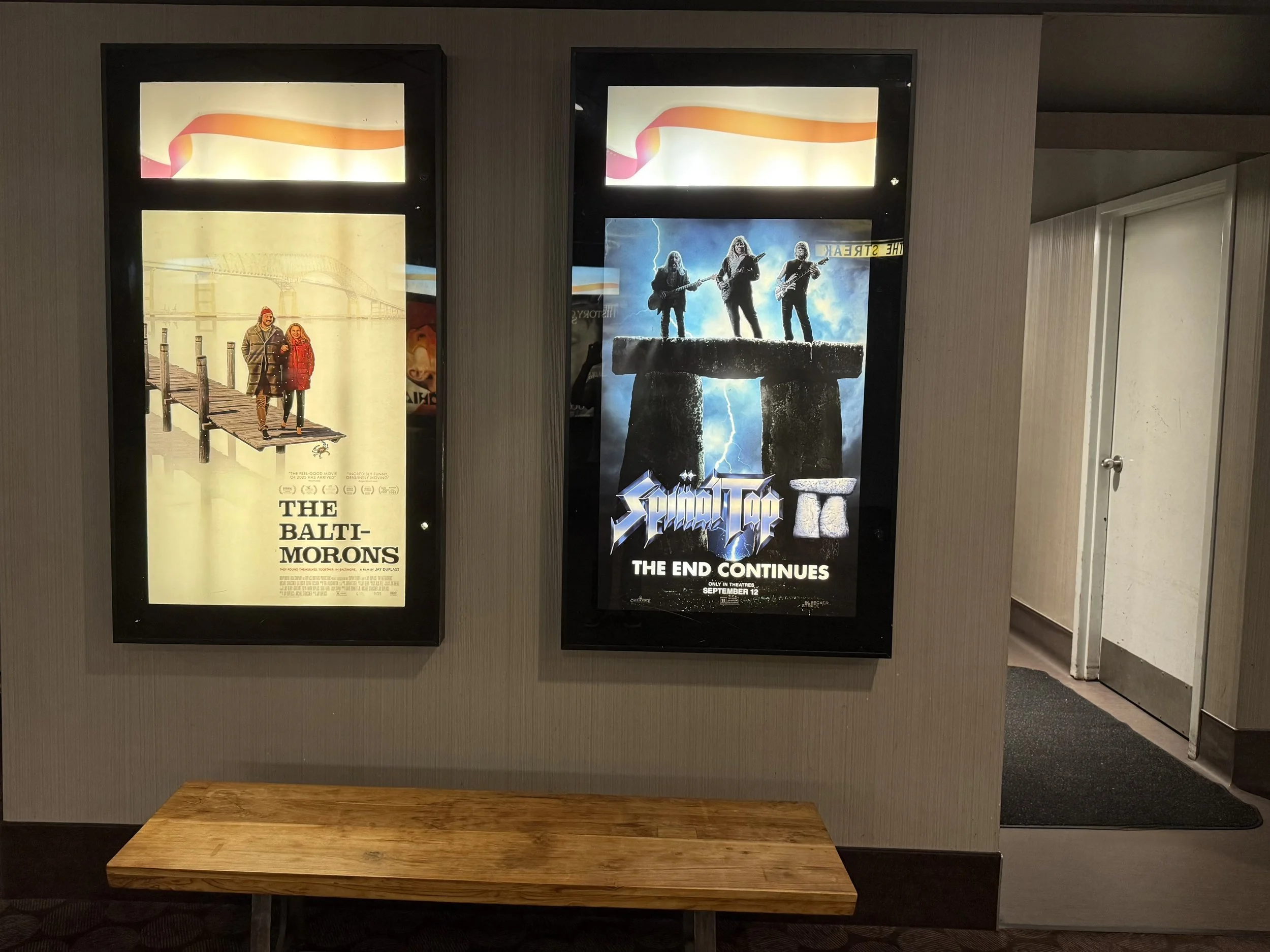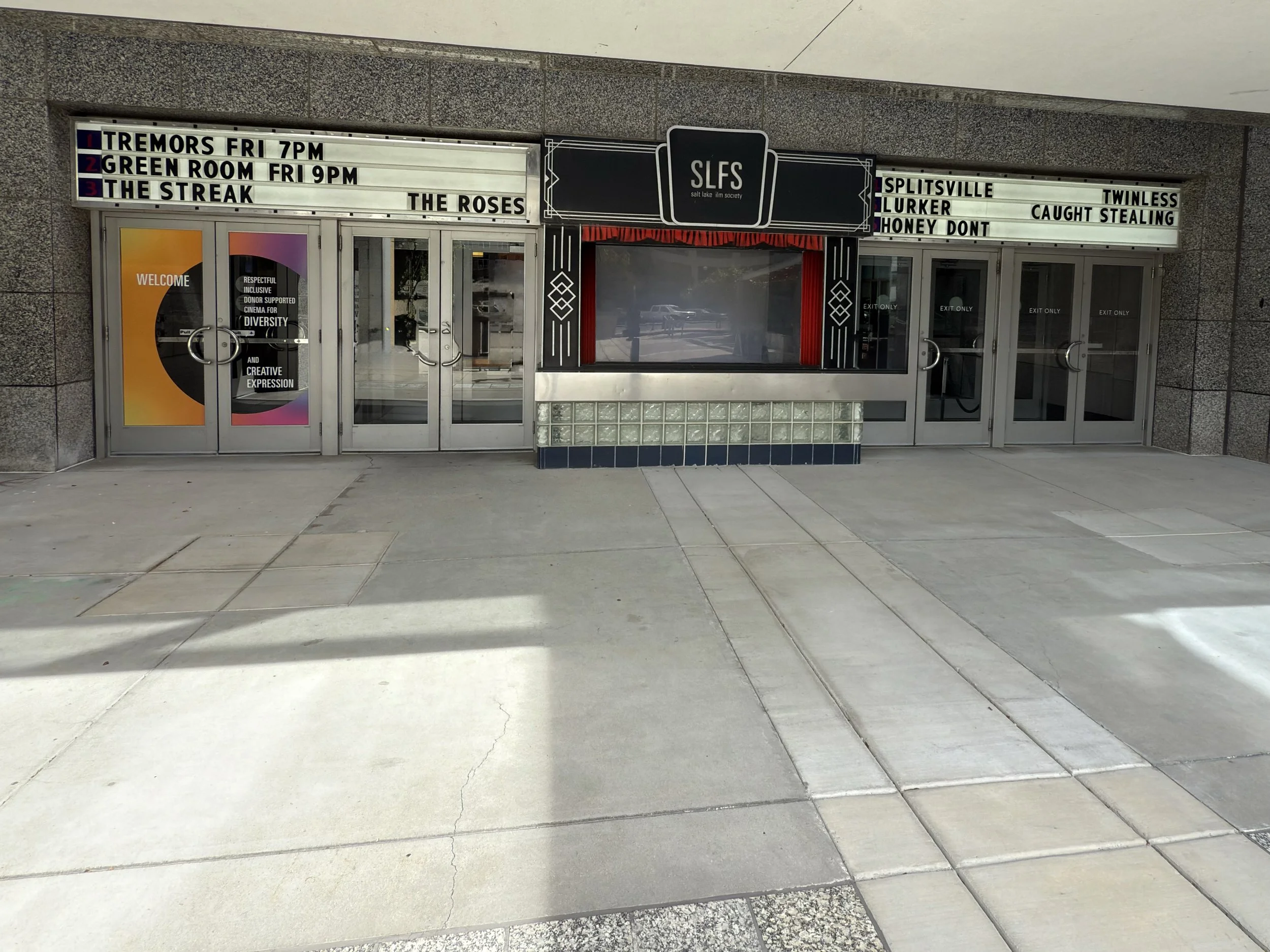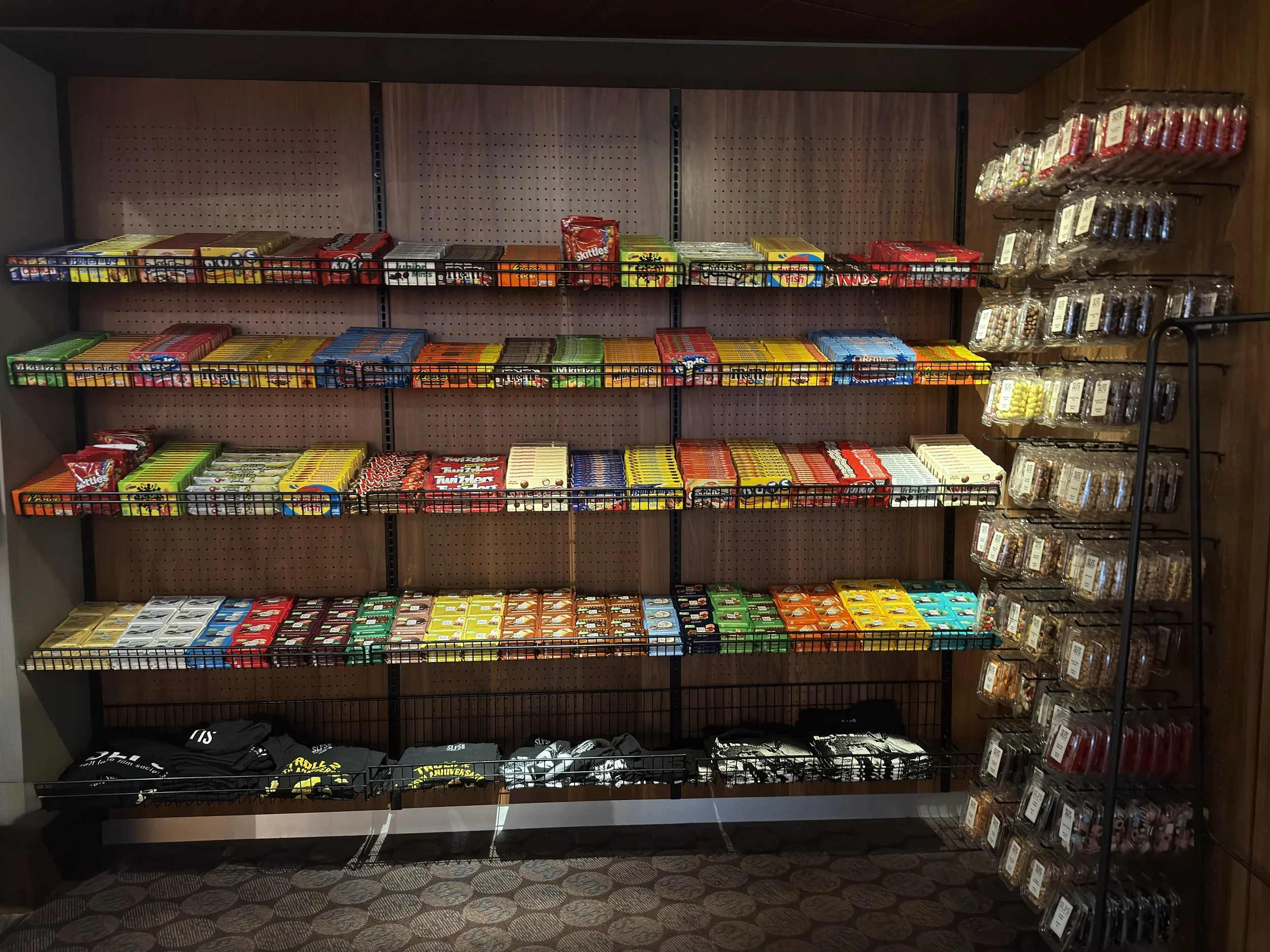Salt Lake Film Society
Address: 111 East Broadway (Broadway Centre Cinemas - see map below)
876 East 900 South (Tower Theater)
Telephone: 801-321-0310
Website: saltlakefilmsociety.org
District: Central City
“I always think of an art house as the new gathering place for stories and ideas. Film is such an accessible art form. You can have a film about anything. So, you can have a conversation about anything.” Tori A. Baker, CEO of Salt Lake Film Society, has had her life shaped by that belief.
A Utah native and University of Utah film major, Tori built her career on the periphery of production - Sundance, other film festivals, the Olympic Games - tracking toward those big moments that bring people together in the dark for a shared experience. When the opportunity arose in 2004 to lead Salt Lake Film Society, she stepped into what would become her calling as a small-business operator in service to the community. “Executive director is really what I am. My official title is CEO, but executive director is a CEO position in a nonprofit. The business is owned by the community. It is all about the mission.”
That mission - “exhibit, create, preserve cinematic experiences” - is rooted in the origin story of Salt Lake Film Society. In 2001, siblings Kris and Paul Liacopoulos did what so many community-minded cinephiles have done across America: they saw a neighborhood theater at risk and decided to act. The Tower Theatre, a 1928, one-screen movie house in the 9th & 9th neighborhood, became the seed. “If you are operating a one screen movie house, you very quickly, with that community-based mindset, pivot toward a nonprofit and a mission. And that is what they did.” When a six-screen venue downtown became available - Loews Cineplex had gone under - Salt Lake Film Society signed a lease and began operating what is now Broadway Centre Cinemas. The expansion mattered. “There is a reason megaplexes exist. More options bring more people. Where most art houses are in historic spaces like the Tower, they do not have an option to have multiple screens. The Broadway presented this unique opportunity.”
Tori arrived to find a young nonprofit with big potential. She focused on maturing the organization - diversifying revenue across ticket buyers, donors, foundations, and public support; strengthening the development team; and clarifying a curatorial ethos that privileges artistic merit, cultural relevance, and community conversation over sheer box-office size. “It is not about the size of the film as much as it is about the film. We look at what is in the zeitgeist, what is critically acclaimed, what is in festivals and awards history, and what the community is looking for. I would play a Martin Scorsese film because he is one of the most important directors alive.”
Under that umbrella, Salt Lake Film Society has grown programs that make it far more than a place to buy a ticket. MAST - the Media Accelerator Studio - fosters artists, predominantly in animation, with the mission of turning artists into artist-entrepreneurs. Its short film “Ninety-Five Senses” was nominated for an Academy Award in 2024. Cultural film tours - Pacific Island, Mexico, Czech - bring global cinema into local conversation. Repertory series on Friday and Saturday nights sell out with wall-to-wall crowds, pre-show trivia, introductions, and goofy, free swag, transforming screenings into rituals. “Those community experiences - decorating the theaters, sharing little gifts - are where younger folks are finding us.”
Beyond those special events, the calendar moves through a rhythm that has become part of the city’s cultural fabric. “We do monthly themes from January to June, then our summer cult program from June to September, horror films until the end of October, and Rocky Horror Picture Show closes it out - which is turning fifty this year, 2025. We’ve been doing it for twenty-five years, and our emcee is the longest running in the country, close to thirty-seven years.”
The year rounds out with holiday repertory programming, always layered on top of a steady churn of independent feature films in release. “We’re open 365 days a year. Our curated programs push through the year, but regular season films are always playing. The Roses, for instance, is the new big independent film right now, probably a great gateway if you’re not familiar with indie film. Then on Friday or Saturday, you might catch a horror screening, or a filmmaker event like the recent local baseball documentary, The Streak, that’s drawn audiences from all over.” For Tori, this mix - steady independent releases, seasonal programs, and special community events - keeps the Society rooted in both art and audience.
The two theaters now play distinct but interdependent roles. “The Broadway is the mothership, and the Tower is the heart.” As a six-screen cinema in the Central Business District, Broadway can run a multitude of films at once, providing the financial backbone that helps sustain a single-screen house. The Tower, by contrast, is the place of discovery. In a neighborhood historically rich with students and artists, the one-screen rhythm breeds a certain magic. The moment a film unfurls, so does one’s view of what cinema can be. “I call that the ‘Apocalypse Now’ moment where you see a film that changes your entire perception of the medium.”
That heart, however, has been tested. The Tower has remained shuttered since the pandemic. During an attempted 2021 reopening, amid a lobby renovation, engineers discovered significant structural issues with the roof. As a tenant at the time, Salt Lake Film Society faced a choice familiar to stewards of historic movie houses nationwide: walk away and likely watch it be demolished or transformed into something non-cinematic, or take responsibility for its future. “If we do not do it, nobody will.” The organization spent years raising funds and, in early 2023, purchased the Tower outright - bricks, mortar, history, and hope.
Ownership turned a crisis into a vision. Architects, engineers, and designers are now working through a path to repair, preserve, and reimagine the building for its next hundred years. This path comes with an environmental mandate to improve operations, and a curatorial mandate to protect what makes a neighborhood movie house a neighborhood movie house. “If we get this right, you will be able to see its entire journey - the 1920s bones, the 1950s renovations, and the future of cinema. It is slower than people would like, but we will not reopen until it is safe and right.”
Reopening will require a full capital campaign: foundational gifts to kick it off, and broad community participation that reflects how art houses are truly built. Unlike nine-figure performing-arts palaces, the Tower’s restoration will depend on elbow grease and a thousand acts of civic love. “It is going to take millions, and it is going to take every one of us. Be ready for the call. Volunteer, donate, or keep coming to the movies at the Broadway so we can remain sustainable while we do this work.”
The Tower’s neighborhood knows that symbiosis well. Coffee Garden and Cahoots, longtime neighbors, and other local businesses, have understood and benefited from the vibrancy and foot traffic the cinema brought. Tori is quick to credit these neighbors, who stood by the Tower in the past and now eagerly look forward to its reopening, knowing how vital it is to the life of the community.
While the Tower sleeps, its spirit lives downtown. The divide between “weird stuff and classy stuff” evaporated during the pandemic; now the Society simply curates to the community across both spaces, treating cinema as a town hall for difficult, urgent, and joyful conversations. Post-film dialogues with filmmakers and audiences have ranged from raw and vulnerable to celebratory and cathartic. People spill out to The Copper Onion and keep talking. “Storytelling and coming together can bring us together to have conversations that are very difficult. We have had special, safe-space conversations here.”
Tori’s peers across the country recognize what Salt Lake has built. There may be 250 to 300 art houses nationwide, but few organizations operate both - a six-screen downtown cinema and a historic neighborhood house - while also running year-round cultural programs and an artist accelerator with Oscar credentials. “Sometimes people from bigger cities come here and say, ‘We do not have this in our city.’ We are trailblazing, leading the movement for what a town hall of film means to a community.”
Through it all, Tori returns to the Society’s “why,” which, for her team, matters more than the “what”: the sentence that keeps them showing up. “Film fuels dreams, ignites conscience, and sparks community.” It explains the programming choices that favor conversation over spectacle; it animates the preservation of a 1928 brick landmark; and it hums beneath every packed repertory night that sends hundreds of people back into the city with a pin on their jacket and an idea lit behind their eyes.
There will be a day, not yet scheduled, when the Tower’s doors open again. The one, beautiful auditorium will exhale, ready to host the next “Apocalypse Now” moment for an eighteen-year-old who thought cinema meant something else. Until then, the work continues at the Broadway, where six screens keep the conversation alive, and the nonprofit hums at full maturity - tickets, concessions, donors, foundations, and public partners - all braided together to sustain a civic art form.
Tori calls it service. Her team lives it daily. And the community, as ever, will finish the story. “Why you put up with working in the nonprofit sector, even with all its challenges, is that you want to change the world in this small little space. Our why is why we show up every day.”

